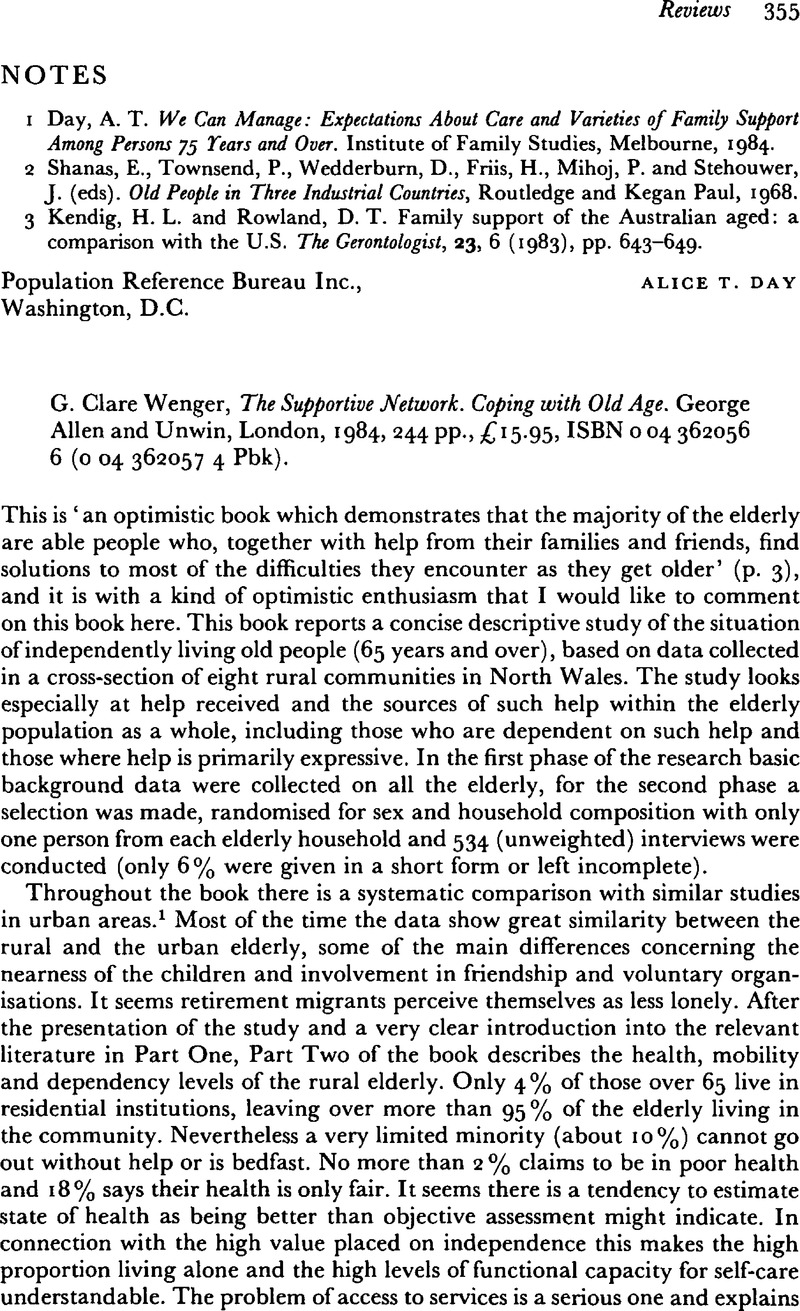No CrossRef data available.
Published online by Cambridge University Press: 14 November 2008

1 Hunt, A.The Elderly at Home: a Study of People Aged Sixty-five and Over Living in the Community in England in 1976. Social Survey Division, Office of Population Censuses and Surveys, London, 1978Google Scholar; Abrams, M.Beyond Three Score and Ten: A Second Report on a Survey of the Elderly. Age Concern England, Mitcham, Surrey, 1980.Google Scholar
2 Hunt, A.op. citGoogle Scholar; Abrams, M.op. cit.Google Scholar
3 See for example Weiss, R. S.Loneliness: The Experience of Emotional and Social Isolation. MIT Press, Cambridge, Mass, 1973Google Scholar; Jong-Gierveld, J. de and Raadschelders, J. Types of loneliness. In Peplan, L. A. and Perlman, D. (eds), Loneliness, a Source Book of Current Theory, Research and Therapy. Wiley, New York, 1982, pp. 105–119.Google Scholar
4 Kahn, R. L. and Antonucci, T. Convoys over the life course: attachment, roles and social support. In Baltes, P. and Brim, O. (eds). Life Span Development and Behaviour, Volume Three. Academic Press, New York, 1980, pp. 253–286.Google Scholar
5 See Robinson, B. and Thurner, M.Taking care of ageing parents: a family cycle transition. The Geronlologist, 19 (1979), 586–593CrossRefGoogle Scholar; Johnson, C. L.Dyadic family relations and social support. The Gerontologist, 23, 4 (1983), 377–383CrossRefGoogle ScholarPubMed; Knipscheer, K. P. M. Problems and possibilities in family care for the impaired elderly. Paper presented at the International Conference ‘Support networks in a caring community’. The Hague, 6–12 January, 1985.Google Scholar